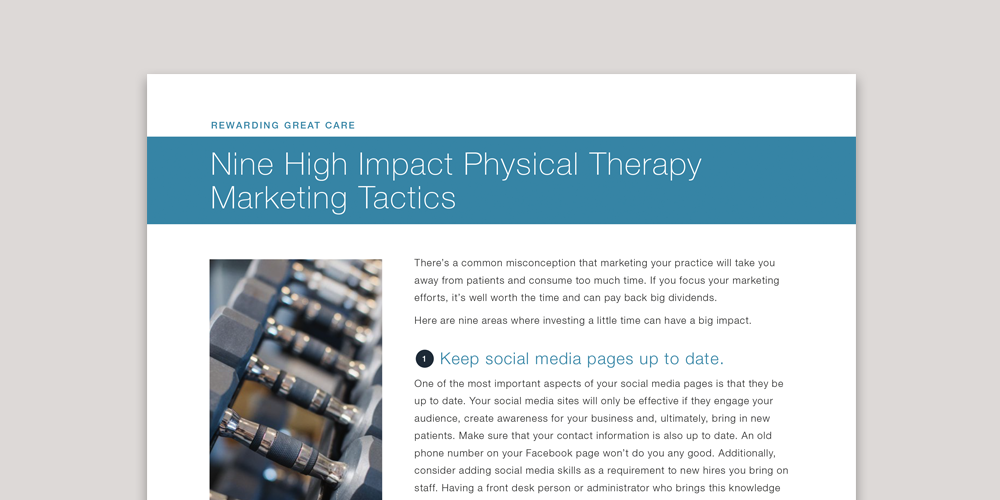As physical therapists, we know that if people are going to meet their rehabilitation goals, they will need to do some work on their own. Meeting these goals typically involves a ‘home exercise program,’ or HEP.
As physical therapists, we also know that HEP compliance can be a bit of an issue. In fact, in a recent therapist survey conducted by Clinicient, only 16% of responders said that the majority of their patients complete their HEP. The reasons for ‘non-compliance’ vary and are generally very reasonable. Time is an issue, life has many other priorities, the plan is too difficult and so on.
So, what’s the key to helping people meet their goals if their lives are already so full? Here are some of the principles I use.
Keep it simple.
Patients don’t need a book full of things to do. I have had patients come to me with ‘their home program,’ with carefully cataloged home programs. When reviewing the exercises, it was easy to see why this program was not successful – no one has time to dedicate hours and hours to their ‘home program’ and still have a life. Review the patient’s goals and keep the program simple and focused.
Make it meaningful, but keep it functional.
Your patient should know why they’re doing every single exercise or activity in their home program and be able to relate it to their functional goals. If your patient has a goal of climbing stairs without pain, every exercise should be geared toward that.
Granted, some people with more deficits may need to start with more simple exercises – but they should still understand that being good at leg raises isn’t the goal. They should instead understand how each exercise will help them progress towards their goal(s) without pain.
Ask your patient what they want!
‘I love straight leg raises!’ said no one ever. While most of us have our go-to exercises for various diagnoses, it’s not fair to your patients if you’re picking exercises that YOU prefer.
There are millions of ways to improve quad strength, balance or hamstring flexibility. Ask your patient if they like the exercises they’re doing, and if they don’t, work together to find an exercise or activity that they can’t wait to do.

Marketing your practice doesn't have to steal all of your time. Learn nine high impact tactics you can start today.
Download NowKnow the reason behind every activity you’re asking them to do.
We all get in ruts, or we get really excited about THE next great move that is sure to fix everything. One of my favorite things about being a physical therapist are the endless opportunities to challenge people, but each and every challenge I give someone should relate directly to their goal – and the patient should know that. Explain your reasoning, and make sure that it makes sense to the person in front of you. If it makes sense to them, they will be MUCH more likely to follow through.
Don’t be bossy.
‘Therapeutic alliance’ and ‘patient engagement’ are two terms that are very popular right now. Many times it is in relation to the business or marketing side of physical therapy. Let’s not forget who the real boss is in therapy!
While the PT is supposed to be the expert regarding rehab, coming up with the plan is going to take teamwork, and executing the rehab plan is ultimately up to the patient. Asking the patient what they would like to do, and how much time they can commit to the home portion of their program will go far in creating a plan that they’re excited to do rather than a chore they look to avoid.
Listen to feedback.
In a perfect world, the patient will report full compliance with their program, resolution of their symptoms and meeting of their goals. But we all know that this rarely happens.
Getting feedback on why they did not complete their home program is key in giving them a better home program. Maybe the program was too long, too complicated, too boring, or life just got overwhelming? We can help with that. We can work with people to create a program that will fit their life AND help them move towards their goals.
The most successful programs are those that become integrated into everyday life, and progress back to normal life. Once upon a time, I wrote this goal for almost all of my patients: ‘Patient will be independent and compliant with home program for (whatever they were seeing me for).’ Nowadays, that is the least fun, least functional goal I can think of. People want to do the things they love. People want to hurt less. I have seen much more compliance with ‘home programs’ when we create HEPs that are fun, focused, and feel good.



Comments